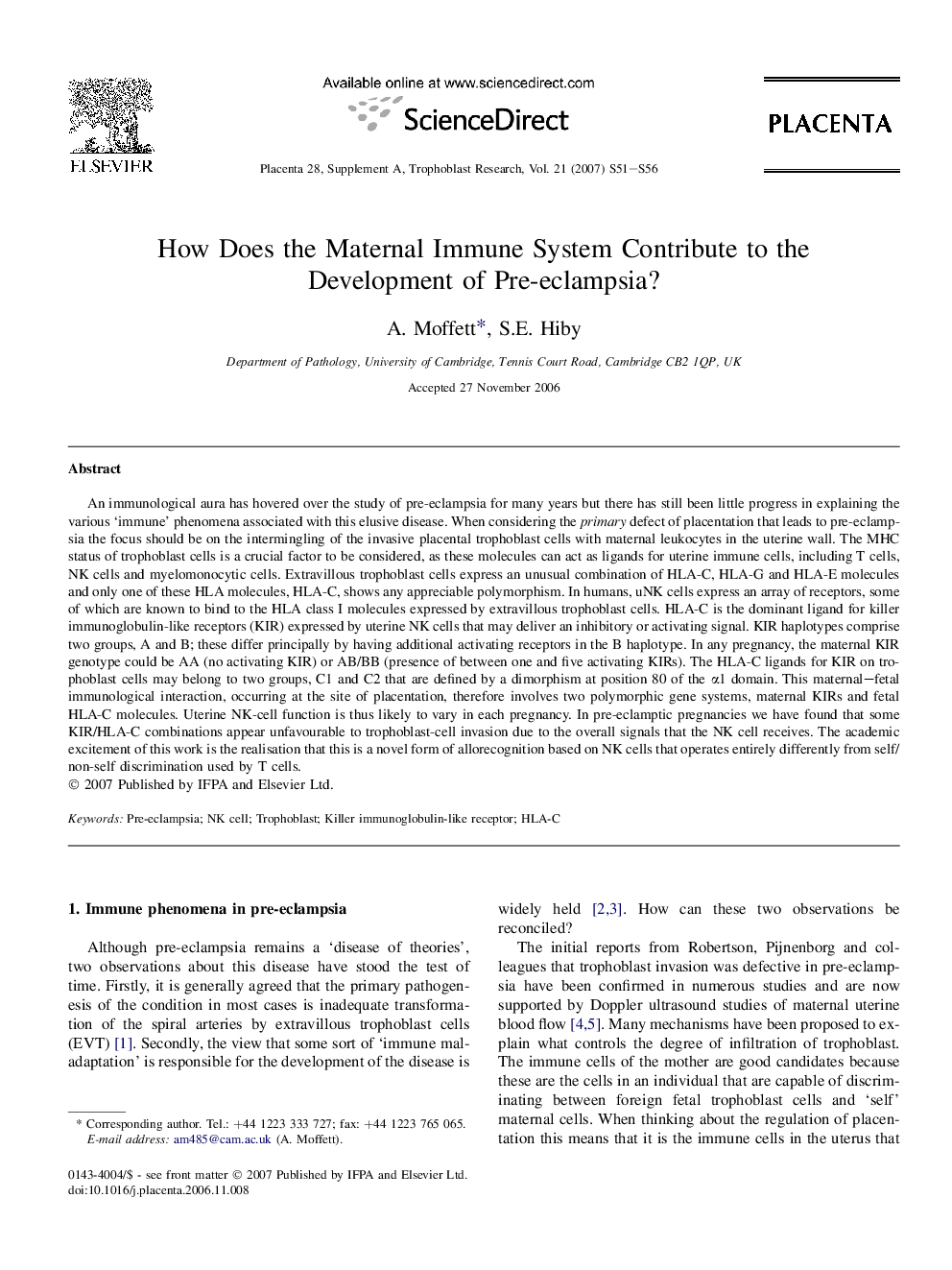| کد مقاله | کد نشریه | سال انتشار | مقاله انگلیسی | نسخه تمام متن |
|---|---|---|---|---|
| 5896302 | 1154562 | 2007 | 6 صفحه PDF | دانلود رایگان |
عنوان انگلیسی مقاله ISI
How Does the Maternal Immune System Contribute to the Development of Pre-eclampsia?
دانلود مقاله + سفارش ترجمه
دانلود مقاله ISI انگلیسی
رایگان برای ایرانیان
کلمات کلیدی
موضوعات مرتبط
علوم زیستی و بیوفناوری
بیوشیمی، ژنتیک و زیست شناسی مولکولی
زیست شناسی تکاملی
پیش نمایش صفحه اول مقاله

چکیده انگلیسی
An immunological aura has hovered over the study of pre-eclampsia for many years but there has still been little progress in explaining the various 'immune' phenomena associated with this elusive disease. When considering the primary defect of placentation that leads to pre-eclampsia the focus should be on the intermingling of the invasive placental trophoblast cells with maternal leukocytes in the uterine wall. The MHC status of trophoblast cells is a crucial factor to be considered, as these molecules can act as ligands for uterine immune cells, including T cells, NK cells and myelomonocytic cells. Extravillous trophoblast cells express an unusual combination of HLA-C, HLA-G and HLA-E molecules and only one of these HLA molecules, HLA-C, shows any appreciable polymorphism. In humans, uNK cells express an array of receptors, some of which are known to bind to the HLA class I molecules expressed by extravillous trophoblast cells. HLA-C is the dominant ligand for killer immunoglobulin-like receptors (KIR) expressed by uterine NK cells that may deliver an inhibitory or activating signal. KIR haplotypes comprise two groups, A and B; these differ principally by having additional activating receptors in the B haplotype. In any pregnancy, the maternal KIR genotype could be AA (no activating KIR) or AB/BB (presence of between one and five activating KIRs). The HLA-C ligands for KIR on trophoblast cells may belong to two groups, C1 and C2 that are defined by a dimorphism at position 80 of the α1 domain. This maternal-fetal immunological interaction, occurring at the site of placentation, therefore involves two polymorphic gene systems, maternal KIRs and fetal HLA-C molecules. Uterine NK-cell function is thus likely to vary in each pregnancy. In pre-eclamptic pregnancies we have found that some KIR/HLA-C combinations appear unfavourable to trophoblast-cell invasion due to the overall signals that the NK cell receives. The academic excitement of this work is the realisation that this is a novel form of allorecognition based on NK cells that operates entirely differently from self/non-self discrimination used by T cells.
ناشر
Database: Elsevier - ScienceDirect (ساینس دایرکت)
Journal: Placenta - Volume 28, Supplement, April 2007, Pages S51-S56
Journal: Placenta - Volume 28, Supplement, April 2007, Pages S51-S56
نویسندگان
A. Moffett, S.E. Hiby,